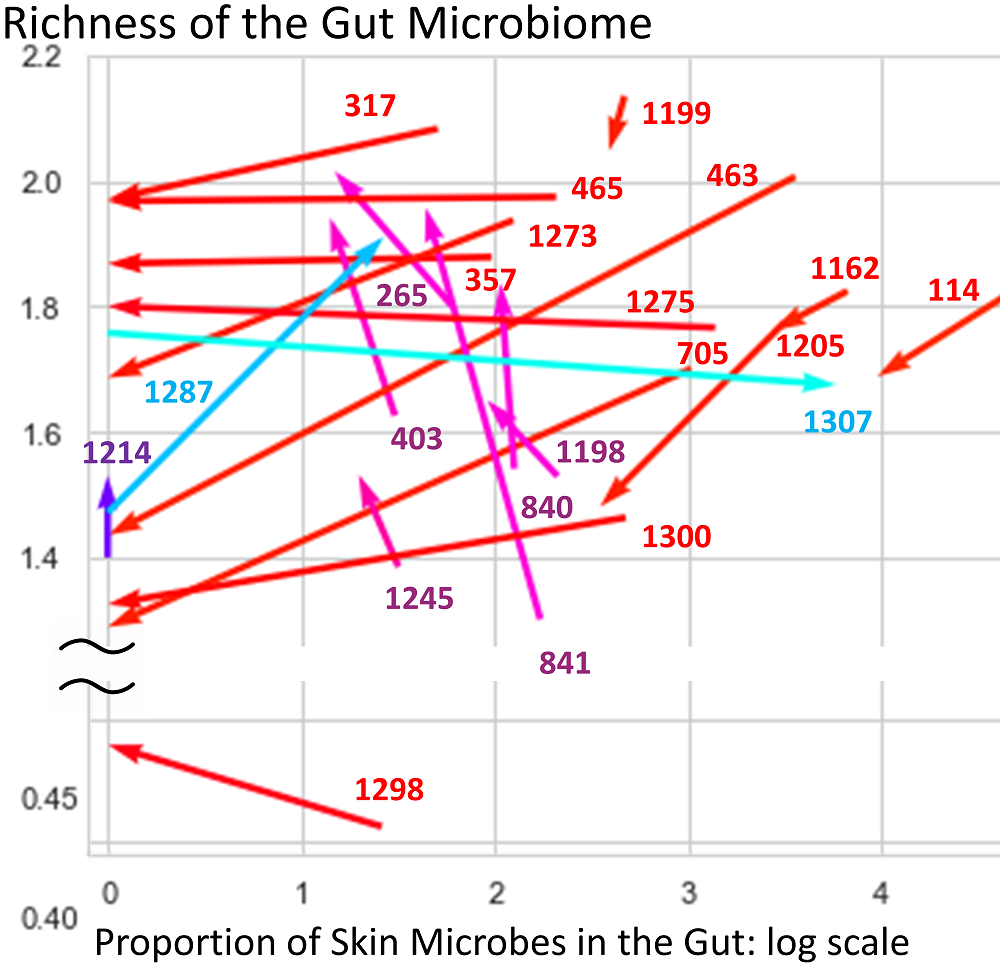Largest MEBO/PATM Clinical Study Reveals Important Insights
Wednesday, November 4, 2020
A new peer-reviewed paper published today in JMIR Dermatology - Cutaneous Bacteria in the Gut Microbiome as Biomarkers of Systemic Malodor and PATM Conditions - reveals clues to what causes flareups of these conditions.
The trial (registered as NCT03582826) which involved participants from 22 countries, was home-based, remote and decentralized - a new model in clinical research. The study showed that bacteria that cause armpit and feet odor can be detected in the gut, correlating with the severity of MEBO and PATM conditions, independent of trimethylaminuria (TMAU) diagnosis.Some of the study participants can recognize their results (labeled with the last 3 or 4 digits of their MEBO IDs) in this "vector field" representation.
The 22 study volunteers shown in this figure were able to observe both flare-ups and improvements in their condition. The Y axis shows changes in microbial diversity. The X axis shows abundances of selected bacterial species. Beginning of the arrow shows participant's microbial diversity and levels of skin microbes in the gut during a flare-up. The end of the arrow points to improvement in their condition. As this figure shows, the only exceptions to the conclusion that the fewer cutaneous bacteria in the gut, the fewer skin emanations were individuals with IDs ending in 1214, 1287 and 1307. All of them observed very minor if not negligible (and easy to misinterpret) improvement of their condition (flare-ups happening from “all the time” to “most of the time”). 1214 was seen by a professional dermatologist, who concluded that a diagnosis of bromhidrosis didn’t seem warranted. 1307 had undergone a Botox procedure to treat hyperhidrosis, but was still experiencing symptoms (and, from our results, large fluctuations in odorous skin bacteria). 1287 did not report any skin odors and noted only halitosis.
Gut microbiome diversity (aka total number of different species) is vital for building a strong immune system. Yet less than half participants of this study needed to improve it. Most individuals with MEBO have rich tropical rainforests of bacteria in their gut and may benefit from slight reduction of diversity or just a slight increase of certain species at the expense of cutaneous odor-causing bacteria. PATM sufferers, on average, have larger amounts of these bacteria and lower diversity.
Read the paper to learn more and stay tuned for
more details as they develop.
REFERENCE

